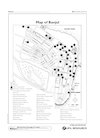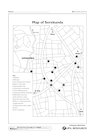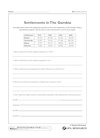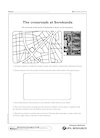Serekunda- an expanding Gambian town
Add to My Folder
Rich in culture and tradition and varied in physical features, The Gambia makes an ideal country for a contrasting locality study
Surrounded completely by Senegal, The Gambia is the smallest country on the African continent. Its economy relies mainly on agriculture (peanuts being its main export) and fishing, although the tropical temperature and idyllic beaches have seen tourism increase in coastal areas. Serekunda – the largest town in The Gambia – is little influenced by tourism, yet in recent years, its population has increased quickly, mainly due to young men leaving villages in rural areas to seek jobs in the town. This has resulted in an imbalance in the rural population, and has put extra pressure on women in agricultural and domestic work. Serekunda owes its size, rapid growth and importance in the Gambian economy to its location. While the capital city of Banjul cannot expand because it is an island, there are no constraints on Serekunda’s growth.
Transport and housing
Serekunda has been the hub of the Gambian transport system since roads replaced the River Gambia as the main mode of transport up-country. The main roads are tarmacked and there is a network of buses and bush-taxis, but no railway. Housing in the town spreads outwards from the town centre and consists mainly of small traditional fenced-off enclosures, referred to as compounds. However, newer peripheral housing is constructed more like bungalows or detached houses common in Western countries, which shows how The Gambia is changing.
Day-to-day living
Already a member? Sign in below.
Published 26 September 2007
Reviews
You need to be signed in to place a review.







